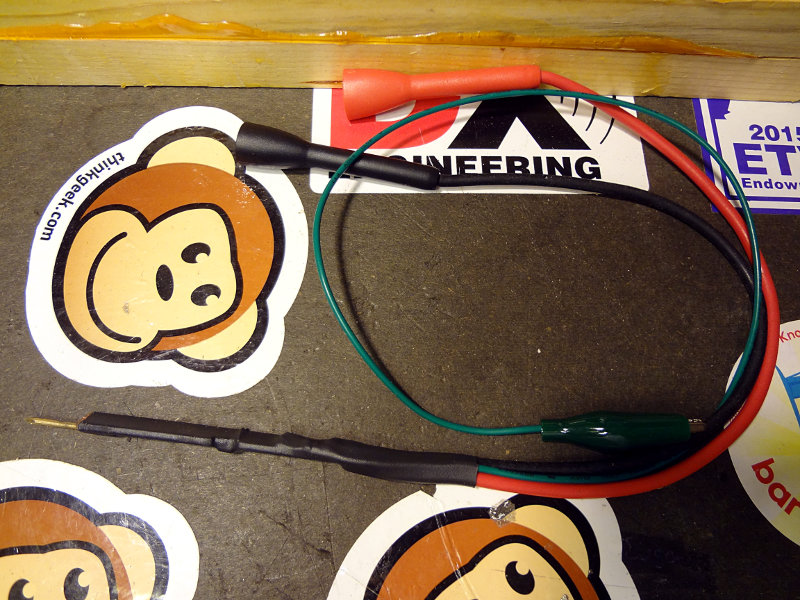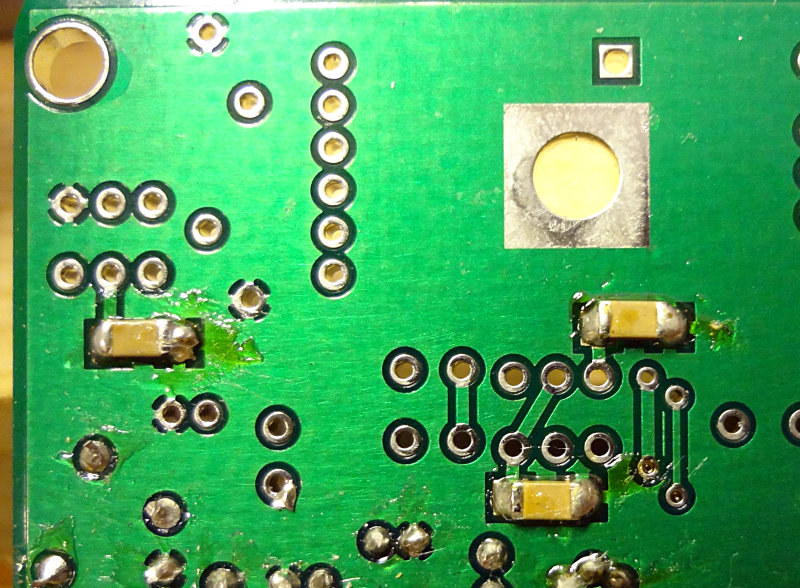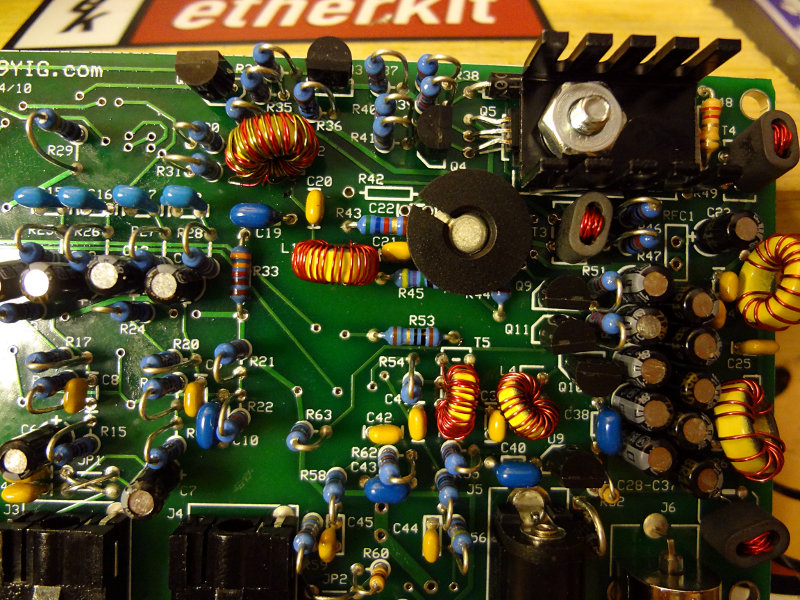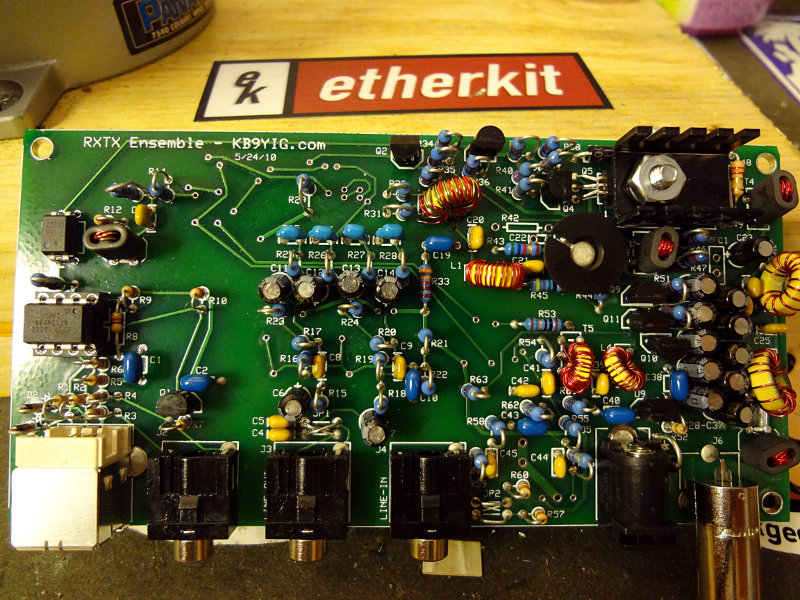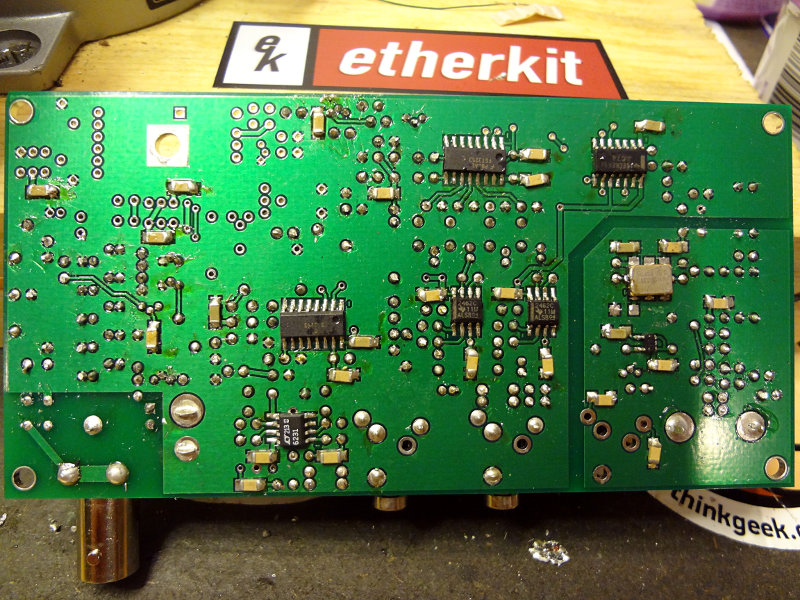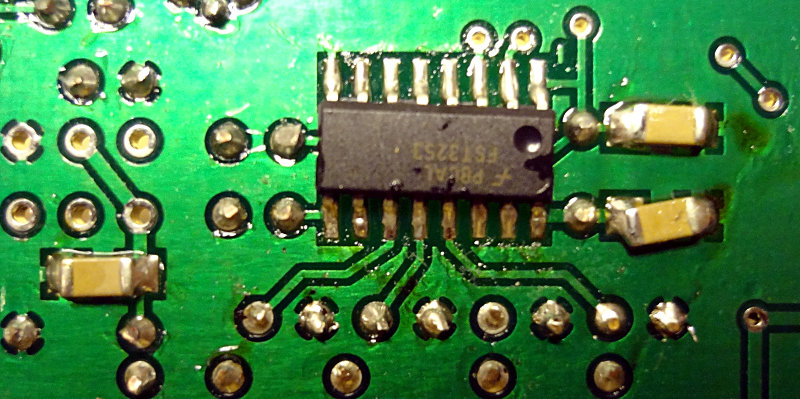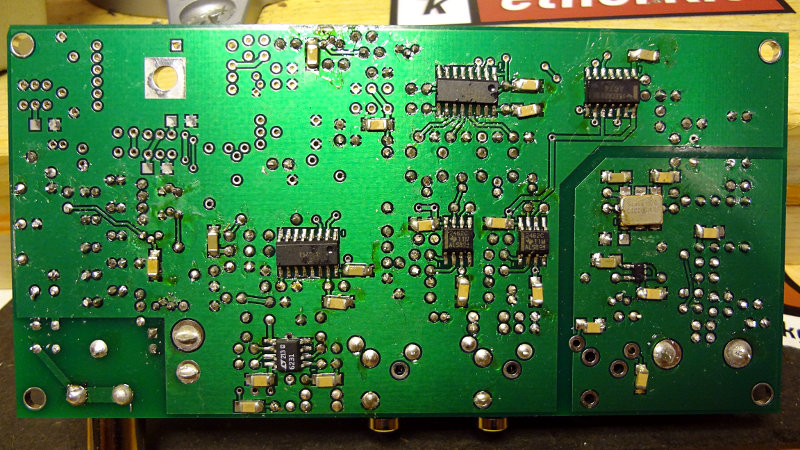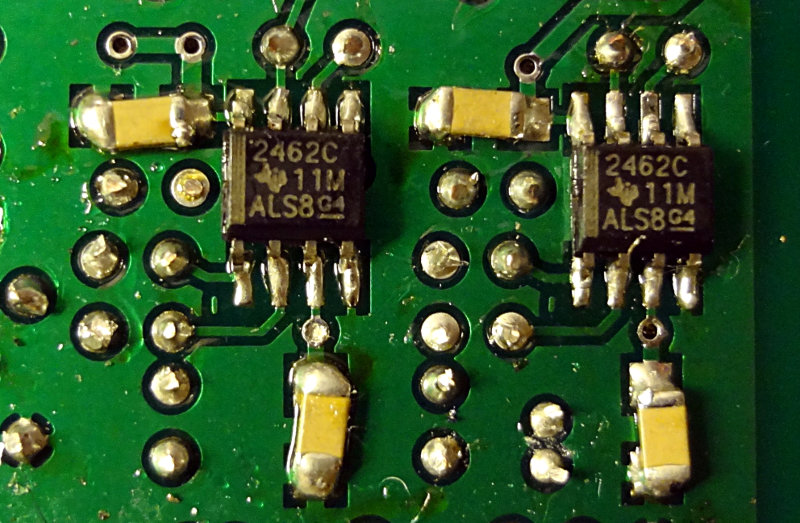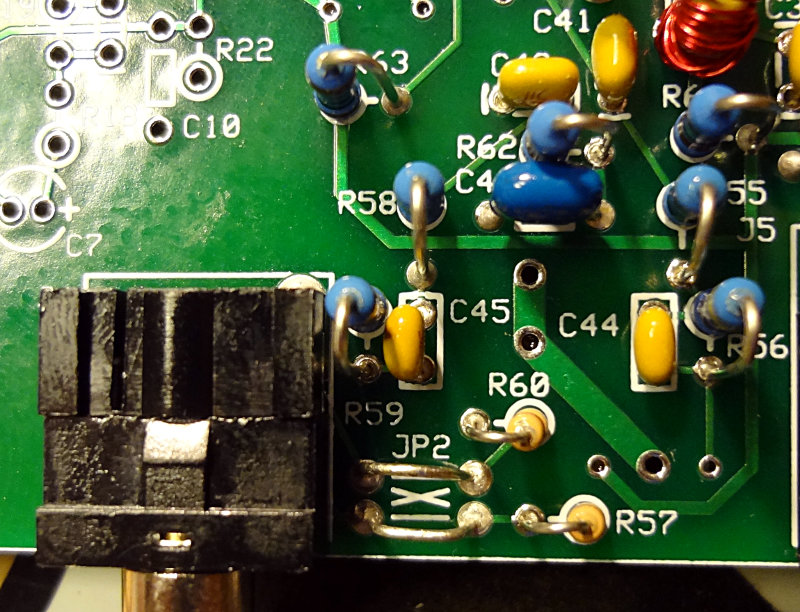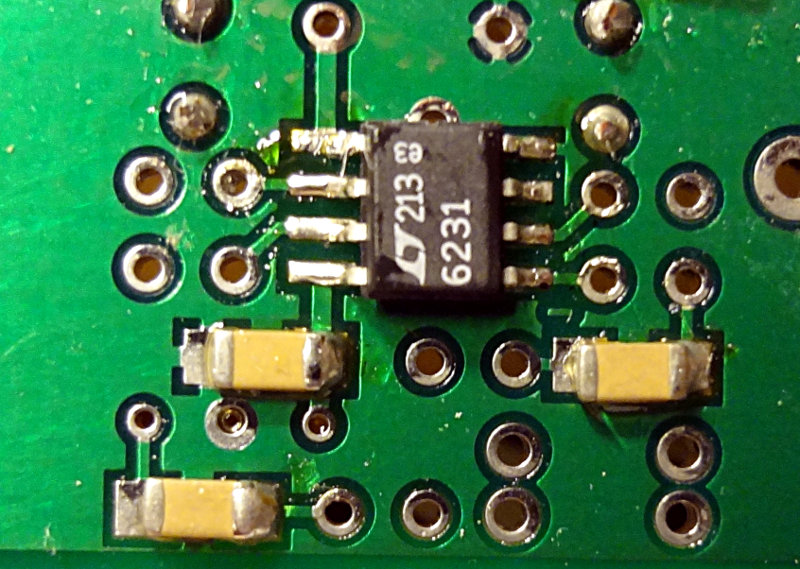I camee across N5ESE‘s site and started browsing around some of his projects. He’s got quite the list of them. In his Gizmos section is an RF probe which looked pretty easy to build.
I had a set of those springyy hook-y grab-y DMM leads that were broken, so I cut off the spring-y hook-y grab-y part to use for the DMM side.
On the work bench was a perfectly sized piece of PCB from when I was experimenting with cutting and scoring PCB. From the RXTX build, I just happened to have some extra 0.01 μF SMD capacitors which were perfect for the job. A 1N34A diode and 4.7MΩ resistor finished off the parts.
I used a small hacksaw to score the PCB and divide it into three sections, cut out a notch for the diode and cut the head off a brass nail to serve as the probe. Soldering everything in place was pretty easy.

Soldered on the leads and a ground wire with alligator clip and put everything into a shrink wrap tube.

The full probe, with all the leads ready for some RF to measure. I still need to find a decent enclosure to shield the probe with.
